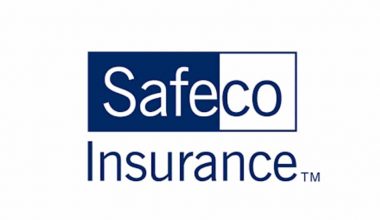When it comes to auto insurance, “broad form” refers to a coverage policy that simply covers liability. It’s even more bare-bones than the liability-only policy that most people think of as minimum coverage. Although broad-form car insurance policies are less expensive, they are not the best option for most drivers. Individual state minimum coverage requirements might be higher than what a broad-form policy, which only covers one driver, offers. In this article, we will discuss broad-form insurance coverage costs and an overview of how they work in Colorado.
What Is Broad-Form Insurance?
Broad-form insurance typically refers to a type of insurance policy that provides extensive coverage for a variety of risks. In the context of auto insurance, broad-form insurance offers coverage for specific drivers rather than specific vehicles. This means that the policyholder is covered regardless of the vehicle they are driving, which can be useful in situations where they borrow or rent cars frequently.
However, it’s important to note that the specifics of broad-form insurance can vary by insurance company and location, so it’s essential to review the policy terms carefully to understand the coverage provided.
Understanding Broad-Form Insurance
Broad-form insurance covers more than just the essentials. Automobile glass insurance is a type of broad-form insurance. Glass insurance could be necessary for a client who frequently drives on roads known to crack windshields. Glass insurance is not automatically included in most types of motor insurance; thus, it must be acquired separately at an additional cost.
Depending on the coverage being discussed, “broad-form insurance” may have a varying set of connotations. The typical insurance policy is of the wide type or basic variety. For commercial insurance, some common coverages include:
- Coverage for common disasters like fire, explosions, storms, smoke, riots, vandalism, and sprinkler leaks
- A broad-form policy will cover damage to your property from things like falling objects, water, and broken windows.
- When it comes to insurance, special-form policies provide the most comprehensive protection, often covering all hazards (including theft) unless otherwise specified.
A “broad form policy” is what insurers in most states mean when they talk about a general liability insurance policy that covers a lot of different things and can be changed to fit different needs.
Also, certain auto insurers have to provide broad-form insurance to businesses. This kind of insurance covers employees, executives, and anyone else who receives a company car but does not own a personal car or have a personal auto policy. It is possible to add an endorsement that protects the named person or their partner while they are driving a borrowed car from someone else.
What Does Broad-Form Insurance Cover?
What a broad form of policy covers is different for each type of insurance, each state, and each insurance business. Policies like car insurance, home insurance, and business insurance can all provide broad-form coverage.
#1. Broad-Form Car Insurance
Standard automobile insurance, at least to the extent that it meets their state’s minimal standards, is well-known and widely purchased. In the event of an accident, you have the option of carrying liability-only insurance, which pays for the medical bills and property damage you do to others but not to your car.
You can either get just liability insurance or you can get complete coverage, which also includes comprehensive and collision coverage. No matter who is at fault in an accident, comprehensive collision coverage will help pay for the repairs to your vehicle.
Add medical payments or personal injury protection (PIP) if you want to be covered for injuries. In most states, such insurance is not mandatory, but in New Jersey, it is.
Depending on where you live, a “broad form” of auto insurance coverage may or may not mean the same thing. The state of Michigan, for instance, provides various degrees of collision insurance. Your insurance provider may or may not pay under collision coverage, and your deductible may or may not apply, depending on the policy you choose.
- No collision coverage: Your own car is not covered in any way. If you cause damage, you must cover the cost of the necessary repairs.
- Limited collision coverage: If your percentage of blame for the accident is 50% or less, your insurance company will pay out. Insurers will cover all costs after you’ve met your deductible.
- Standard collision coverage: If you are judged to be at least 1% at fault, your insurance will cover the cost of repairs above your deductible.
- Broadform collision coverage: If your car breaks down, your insurance will cover the costs. Only if you are at fault in the accident by a majority of the judges will you have to pay your deductible.
#2. Broad-Form Homeowners Insurance
You can expect different coverage from your homeowner’s insurance depending on the policy you purchase. In the event of a covered loss, the policyholder can choose between a “named peril” or “open peril” policy.
A named-peril policy will only pay out for damages from the specified perils. Any other loss type is excluded from coverage. An all-risk policy, also known as an open peril policy, will pay for any sort of claim not specifically excluded under the policy.
The costs of open danger policies are typically higher than those of designated peril policies. Different types of perils may be covered under different provisions of your insurance. For instance, while your home may be insured against all risks, your personal property may only be covered against specific dangers.
#3. Broad-Form Business Insurance
Broad-form insurance for a business can look like a lot of different things. You can change the amount of coverage on business auto insurance, for example, based on your needs.
The most basic auto insurance policy might only cover the cars the company owns and the driver or drivers listed on the policy. This can help you save money. A broad policy could cover all the cars you own as well as any others you rent or lease for work use. This larger coverage might also cover a business owner or worker who uses their own car for work.
People who own businesses and have commercial general liability insurance can add broad-form contractual liability coverage to their policy. This add-on makes the policy handle certain things better, such as:
- Liability for injuries caused by advertisements.
- Responsibility of the host with regard to alcoholic beverages.
- General responsibility for physical harm.
- Newly acquired business coverage.
- Agreements that address all potential legal issues.
What Doesn’t Broad-Form Insurance Cover?
When it comes to losses, broad-form insurance policies cover only those that are specifically identified as “named perils” in the policy. One instance of a loss that a typical insurance policy does not cover is:
- Earthquakes.
- Flood.
- Nuclear accidents.
- War.
Coverage might vary by policy type, insurance company, and state. Consult your insurance agent if you have any questions about your policy’s coverage. They can also go over your policy’s coverage options with you so that you can tailor it to your specific needs.
What Is a Broad-Form Indemnity Example?
Broad-form indemnity refers to a legal concept where one party (the indemnitor) agrees to compensate and protect another party (the indemnitee) from specific losses or liabilities.
An example of a broad-form of indemnity can be found in contracts between businesses. Suppose Company A hires Company B to perform a service. In the contract, Company B agrees to indemnify Company A against any legal claims, damages, or losses arising from Company B’s work, even if the fault lies with Company A. For instance, if a third party sues Company A due to an error made by Company B, Company B is obligated to cover the legal costs and any damages awarded.
In addition, broad-form indemnity clauses can vary in scope, so it’s crucial for both parties to clearly define the terms and limitations within the contract to avoid disputes and ensure adequate protection.
Broad-Form Insurance Cost
If drivers opt for broad-form insurance rather than full coverage, they might save an annual average cost of $1,500. Full-coverage insurance has higher liability limits and additional coverage types like comprehensive and collision than broad-form policies. However, there is an element of risk involved with opting for broad-form coverage, as the insurer will only be held liable for the actions of the named policyholder.
Below, we substitute the cost of minimal liability insurance for one driver and vehicle with the cost of broad-form insurance because the two have comparable rates. However, broad-form plans may be more affordable.
| Company | Liability only | Full coverage |
| Allstate | $1,390 | $3,545 |
| State Farm | $712 | $1,737 |
| Progressive | $924 | $2,393 |
| Geico | $819 | $2,158 |
Due to the fact that we base our insurance rates on a single driver, we must substitute our minimal liability coverage with broad-form insurance. The representative driver is a male, age 30, who operates a Honda Civic EX, model year 2015. Minimum coverage from State Farm is $712 per year, whereas the same policy from Geico costs around $100 more.
How to Get Broad-Form Insurance
To begin, contact at least three insurance companies for estimates if you live in a state that allows broad-form vehicle insurance and have decided it is a good option for you. Since you are seeking a particularly specific form of coverage, it may be best to contact and speak with an authorized agent to receive a quote instead of using the online pricing facility that many providers provide on their websites.
If you’ve gotten quotations from many companies, it’s time to compare premiums and deductibles.
Visit rating agencies like A.M. Best, J.D. Power and Associates, and the National Association of Insurance Commissioners to learn more about the company’s stability, popularity, and customer service. You may choose which insurance provider offers the best value by considering these factors.
When you’ve settled on an insurer, they’ll work with you to complete the policy details.
What Is the Difference Between Broad Form and Named Perils?
Broad form and named perils are terms used in insurance to describe different approaches to coverage. Broad-form insurance provides comprehensive coverage for a specific category, such as all risks associated with a particular type of property, like a home or vehicle. It offers protection against a wide range of perils unless they are explicitly excluded in the policy. This means that unless a peril is mentioned as an exception, it is covered under broad-form insurance.
On the other hand, named perils insurance specifies exactly which perils or risks are covered in the policy. Only the risks explicitly mentioned in the policy document are covered. If a peril is not listed, the insurance policy does not provide coverage for it. Named perils policies are more restrictive compared to broad-form policies, as they offer protection only for the specific risks that are named in the policy.
In summary, broad-form insurance covers a broader range of risks by default, while named perils insurance provides coverage for specific perils explicitly listed in the policy.
When Should You Get Broad Form Insurance?
If you value safety and are willing to pay more for it, broad-form insurance is an excellent choice. It is crucial to comprehend the nature of broad-form insurance, the choices available from the insurance provider, and the benefits that this type of insurance offers.
Homeowners’ insurance is one example of a situation in which a narrower policy is preferable to a more general one. You may rest easy knowing you have adequate protection in the event of a claim by consulting with your insurance agent to ascertain your coverage needs and explore how broad-form insurance can better safeguard you, your loved ones, your business, and your employees.
Broad-Form Insurance Colorado
Broad-form insurance in Colorado, like in many other states, is a type of auto insurance policy that offers coverage to a specific driver rather than a specific vehicle. This means the policyholder is covered regardless of the car they are driving, making it convenient for individuals who frequently borrow or rent vehicles.
In Colorado, broad-form insurance provides essential liability coverage, which pays for bodily injury and property damage that the policyholder may cause to others in an accident. However, it’s important to note that broad-form insurance typically does not include comprehensive or collision coverage, meaning it won’t pay for damage to the insured driver’s own vehicle.
Drivers in Colorado must meet the state’s minimum liability insurance requirements to legally operate a vehicle. Broad-form insurance can fulfill these requirements by providing liability coverage. As insurance regulations and requirements can change, it’s crucial for Colorado residents to stay updated with the state’s specific laws and consult insurance providers or agents to understand the available options and ensure they have adequate coverage for their needs.
Disadvantages of Broad Form Insurance
While broad-form insurance might be less expensive overall, it does not have the option of adding or purchasing optional coverages like comprehensive and collision.
Thus, you, and not the insurance company, will be on the hook for paying for any repairs necessary due to an accident in which you were at fault. If your car is deemed a total loss, you will not receive compensation from your insurance company.
Personal injury protection (PIP) and uninsured motorist coverage (UM/UIM) are optional additions to broad-form insurance that can help pay for medical bills in the event of a collision in which you are at fault.
If you don’t have a car of your own but use other people’s cars frequently, secondary insurance in the form of broad form coverage is something to look into. If the vehicle owner has insurance, your broad form auto insurance will be secondary.
While certain states do offer broad form insurance for motorbikes, this type of insurance does not cover company-owned cars or the operation of motorcycles or recreational vehicles. Not everyone should have “broad form” auto insurance, especially if they have a relatively new automobile or frequently transport more than one person in the car.
Who Should Get Broad Form Insurance?
The truth is that due to restrictions imposed by individual states and significant gaps in coverage, very few people can rely solely on comprehensive policies. Broad-form coverage may be a cost-effective choice if you fit these profiles. However, keep in mind that even with comprehensive form coverage, there is still a substantial possibility of financial loss.
- You’re a responsible driver who can afford to pay for minor accidents and other losses out of pocket, so you’re looking for cheap liability insurance.
- You either have no automobile and borrow or hire rides or your car is old and worthless.
- You never get behind the wheel with anyone else in the car.
- You are protected under a normal insurance policy but are seeking some additional coverage.
In addition, broad-form insurance isn’t always the best choice, even in the aforementioned cases. Those who don’t own a car but regularly use other people’s vehicles may benefit from purchasing non-owner auto insurance.
What Is Broad Form Cause of Loss Insurance?
Broad Form Cause of Loss Insurance is a comprehensive property insurance policy that offers coverage for a wide range of perils, except for those explicitly stated as exclusions. This type of policy provides protection against various risks such as fire, lightning, theft, vandalism, and more, making it broader in scope than named peril policies. Unlike specific peril policies, which only cover listed risks, broad-form cause-of-loss insurance offers more extensive coverage, making it a popular choice for property owners looking for comprehensive protection.
However, the exact coverage and exclusions can vary between insurance providers, so it’s crucial for policyholders to carefully review the terms and conditions outlined in the policy documents. By doing so, property owners can ensure they have a clear understanding of the protection offered and the limitations of their insurance coverage.
Is Broad Form Insurance Worth It?: Bottom Line
When it comes to protecting yourself and your vehicle, the most basic level of protection is broad form auto insurance. The ideal drivers to have broad form insurance are those who:
- Own an older vehicle
- Are single drivers with no family
- Frequently drive vehicles that are not their own
However, adding more people to your policy or purchasing a newer vehicle may necessitate looking into alternative forms of insurance. Spending as much or as little as you choose on security is entirely up to you. You should consider if you can afford car repairs if you cause an accident.
Frequently Asked Question
Does broad form cover theft?
Yes, broad-form insurance can cover theft.
What is broad theft?
Broad theft can include specific perils. Theft and burglary both on and off-premises are included in these types of losses. If you want to know for sure what your insurance covers, though, you should check the declarations page.
Similar Articles
- MOBILE HOME INSURANCE: HOW DOES IT WORK?
- Can I Insure a Car Not in My Name? All You Need To Know
- ACORD CERTIFICATE OF INSURANCE: What Is It & How to Get It?
- SR22 INSURANCE: What Is It & How It Works?






